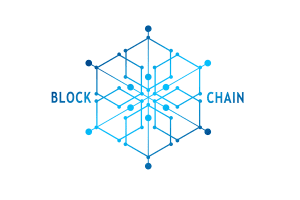Welcome to the world of blockchain technology!
In this beginner’s guide, we’ll explore the fascinating concept of blockchain and its potential to revolutionize various industries.
If you’re new to this topic, don’t worry! We’ll simplify it so that everyone can understand it.
We’ll cover the basics of blockchain, its key features, and real-world blockchain applications in this article. By the end, you’ll have a solid understanding of this revolutionary technology and how it might affect our way of life.
So, let’s jump in and discover the exciting world of blockchain technology together!
What is Blockchain?
Blockchain is a digital record-keeping system where transactions are securely recorded and checked on many computers. It’s decentralized, meaning there’s no central authority controlling it.
It is like a transparent and tamper-proof database where information is stored in blocks that form an unchangeable chain.
Each block in a blockchain has a special name called a hash, and the blocks are connected in a specific order based on time.
Blockchain technology ensures transparency, security, and immutability of data, making it suitable for various applications beyond cryptocurrencies.
In essence, blockchain is a revolutionary technology that enables trust, transparency, and accountability in digital transactions without the need for intermediaries or central authorities.
How Does Blockchain Work?

Blockchain is a fascinating technology that powers cryptocurrencies like Bitcoin and Ethereum.
It operates as a decentralized digital ledger, ensuring secure and transparent transactions.
Let’s take a closer look at how blockchain works:
1st Step: Transaction Formation
- Transactions are the basic units of blockchain.
- They represent the exchange of information, such as money, contracts, or ownership records.
- Multiple transactions are grouped together to form a block.
2nd Step: Block Creation
- Every block holds a distinct identifier known as a hash, similar to a digital fingerprint.
- The hash is generated using complex mathematical calculations.
- The hash helps maintain the order of the blocks in the blockchain.
3rd Step: Verification and Consensus
- Before a block is added to the blockchain, it needs to be verified.
- Verification is done by network participants called nodes.
- Nodes check the validity of transactions in the block.
- Consensus occurs when the majority of nodes agree that the transactions are valid.
4th Step: Chain Formation
- After a block is confirmed, it is included in the blockchain.
- The blocks are linked together in a specific order, forming a chain.
- Each block contains the hash of the previous block, creating a secure and unbroken chain.
- This linking ensures that any changes in a block would be easily detectable.
Benefits of Blockchain

Blockchain technology offers several advantages that have the potential to transform various industries.
Let’s explore the benefits of blockchain in simple terms:
Decentralization and Security
- Blockchain operates on a decentralized network.
- The blockchain is not controlled by any central authority.
- The decentralization makes it difficult for hackers to manipulate the system.
- Transactions are secured using advanced cryptographic techniques.
Transparency and Trust
- Blockchain provides transparency by allowing anyone to view the transactions.
- The information on the blockchain is open and accessible.
- This transparency promotes trust and accountability among participants.
Faster and More Efficient Transactions
- Blockchain automates and digitizes transactions, streamlining processes.
- The removal of paperwork and manual reconciliation saves time and effort.
- Blockchain allows for quick cross-border transactions, removing the need for time-consuming procedures.
- The efficiency of blockchain reduces costs and improves overall transaction speeds.
Enhanced Traceability and Accountability
- Blockchain allows for the tracking and tracing of goods throughout the supply chain.
- Each step of the supply chain can be recorded on the blockchain, ensuring transparency.
- Having traceability helps decrease the chances of fake products and enhances the overall quality of goods.
- Blockchain’s transparency holds people responsible and encourages them to act responsibly.
Empowering Individuals in Developing Countries
- Blockchain technology can offer banking services to people who don’t have access to traditional banks.
- It allows individuals to have secure and direct control over their digital assets.
- Blockchain-based solutions can help improve financial inclusion and empower individuals in developing countries.
Challenges and Limitations of Blockchain

Although blockchain technology brings several advantages, it also encounters specific challenges and limitations.
Let’s explore them in simple terms:
Scalability Issues
- Blockchain networks can experience scalability issues when the number of transactions increases.
- As more transactions are added to the blockchain, it becomes slower and requires more computing power.
- Achieving high transaction speeds without compromising security is a challenge for blockchain technology.
Energy Consumption
- Blockchain networks, especially those using proof-of-work consensus algorithms, require significant energy consumption.
- The process of validating transactions and creating new blocks involves complex computations.
- This energy consumption raises concerns about the environmental impact of blockchain technology.
Regulatory and Legal Challenges
- The rules and regulations regarding blockchain technology are continuously developing and changing.
- Different countries have varying regulations, which can create compliance challenges for businesses operating globally.
- The legal rules for smart contracts and digital assets on the blockchain are not completely clear yet.
Privacy and Confidentiality Concerns
- While blockchain ensures transparency, privacy and confidentiality can be challenging to achieve.
- Public blockchains display transaction details to all participants, limiting the privacy of individuals or businesses.
- Private or permissioned blockchains address this concern to some extent, but still require careful management of access and control.
Interoperability and Standardization
- Interoperability refers to the ability of different blockchains to communicate and share data seamlessly.
- The lack of standardized protocols and formats across blockchain networks hinders interoperability.
- Establishing common standards is essential to fully leverage the potential of blockchain technology.
Adoption and Education
- Blockchain is a relatively new technology, and its adoption and understanding are still limited.
- Many organizations and individuals are unaware of its potential applications or struggle to integrate it into existing systems.
- Educating individuals, businesses, and policymakers about blockchain is crucial for widespread adoption.
Real-World Applications of Blockchain

Blockchain technology has the power to transform different industries significantly.
Let’s explore some real-world blockchain applications in simple terms:
Supply Chain Management
- Blockchain can track and trace goods throughout the supply chain, ensuring transparency and authenticity.
- It helps prevent counterfeit products and improves product quality.
- Participants can verify the origin, manufacturing process, and delivery of goods.
Financial Services
- Blockchain enables secure and efficient cross-border payments, eliminating the need for intermediaries.
- It provides access to financial services for the unbanked population in developing countries.
- Smart contracts on the blockchain automate and enforce agreements, reducing the need for manual processes.
Healthcare
- Blockchain can securely store and share patient records, improving data integrity and privacy.
- It enables the interoperability of medical data among different healthcare providers.
- Research and clinical trials can benefit from blockchain’s transparency and immutability.
Voting Systems
- Blockchain offers secure and transparent voting systems, preventing tampering and ensuring accurate results.
- It allows for anonymous yet verifiable voting, enhancing trust in the electoral process.
- Blockchain can increase voter participation and streamline the counting and auditing of votes.
Intellectual Property Management
- Blockchain can protect intellectual property rights by securely recording ownership and licensing information.
- It provides proof of existence and timestamping for creative works, patents, and trademarks.
- Blockchain reduces disputes and simplifies the process of licensing and royalty distribution.
Energy Trading and Grid Management
- Blockchain facilitates peer-to-peer energy trading, enabling individuals to buy and sell renewable energy directly.
- It supports the integration of decentralized energy sources into the grid, enhancing energy efficiency.
- Blockchain-based platforms can optimize energy distribution and grid management.
Charity and Aid Organizations
- Blockchain enhances transparency and accountability in the charity sector by tracking donations and ensuring they reach the intended beneficiaries.
- It helps donors verify the impact of their contributions and builds trust in charitable organizations.
- Blockchain reduces administrative costs and streamlines the distribution of aid in disaster-stricken areas.
Future Trends and Developments in Blockchain

Blockchain technology continues to evolve, with exciting trends and developments shaping its future.
Let’s explore some of these trends in simple terms:
Interoperability and Cross-Chain Solutions
- Interoperability aims to link various blockchain networks, enabling smooth communication and data sharing.
- By using cross-chain solutions, people can move assets between different blockchains, making them more helpful and practical.
- Interoperability and cross-chain solutions improve the scalability and usefulness of blockchain technology as a whole.
Integration with Internet of Things (IoT)
- Blockchain’s integration with IoT can revolutionize the way devices communicate and transact with each other.
- Internet of Things (IoT) devices can securely share data and perform smart contracts using blockchain as a reliable middleman.
- This integration enhances security, automates processes, and enables new business models in the IoT ecosystem.
Decentralized Finance (DeFi)
- DeFi, short for Decentralized Finance, means using blockchain and smart contracts to recreate traditional financial systems in a decentralized way.
- DeFi applications offer services like lending, borrowing, and trading without relying on middlemen.
- DeFi can make finance accessible to more people, promoting financial inclusion and giving individuals more control.
Central Bank Digital Currencies (CBDCs)
- Central banks are exploring the concept of issuing their digital currencies using blockchain technology.
- CBDCs aim to provide a digital equivalent of traditional fiat currencies, offering efficiency, security, and transparency.
- Blockchain-based CBDCs could enhance financial systems, streamline payments, and reduce costs.
Privacy-Enhancing Technologies
- Privacy-enhancing technologies focus on solving the problem of privacy on public blockchains.
- Methods like zero-knowledge proofs and secure multi-party computation enable private transactions and the sharing of data.
- These technologies strike a balance between transparency and confidentiality, expanding blockchain’s use cases.
Integration with Artificial Intelligence (AI)
- The combination of blockchain and Artificial Intelligence has the potential to unlock new possibilities.
- Blockchain can enhance the transparency and trustworthiness of AI systems by tracking data sources and model outputs.
- AI has the ability to examine large quantities of blockchain data and uncover valuable information, enhancing decision-making processes.
Sustainability and Energy Efficiency
- Innovations in blockchain aim to address the energy consumption and environmental impact of certain blockchain networks.
- People are creating sustainable ways for computers to agree and use less energy, which helps reduce pollution.
- These advancements promote the adoption of blockchain while aligning with environmental sustainability goals.
In the Final Analysis
In closing, blockchain technology offers efficiency, security, and transparency across a range of industries. Its usages include voting systems, banking, healthcare, supply chain management, and more.
Despite obstacles, blockchain has a significant promise of innovation and improvement. Embracing blockchain opens the door to a future that is more reliable and secure.
To further explore and expand your knowledge about blockchain technology, here are some additional resources:
- Websites: Visit reputable websites such as Blockchain.com, CoinDesk, and CoinMarketCap for the latest news, articles, and market insights related to blockchain.
- Online Courses: Platforms like Coursera, Udemy, and edX offer courses on blockchain fundamentals, smart contracts, and blockchain development.
- Podcasts: Listen to informative podcasts like “Unchained” by Laura Shin and “Epicenter” for discussions and interviews with blockchain experts.
- Community Forums: Engage with blockchain enthusiasts and experts on platforms like Reddit’s r/blockchain and Bitcointalk.org to ask questions and join discussions.
These resources will help you stay updated, gain insights, and connect with the vibrant blockchain community. Happy exploring!

My name is Harshil and I am a passionate writer, with a love for exploring new ideas and sharing them with the world.
I started this blog as a way to express my thoughts and share my ideas with a wider audience. My goal is to use my writing to connect with people, inspire new perspectives, and create a community of like-minded individuals who are passionate about learning and growth.
Whether I’m writing about Technology, personal development, or just sharing my thoughts on the world around us, I believe that words have the power to change the way we see things and make a positive impact on our lives.
So, come join me on this journey, and let’s see where our imaginations can take us!”


